Earthworm Gathering Part Four – A Magical Connection
Earthworm Gathering Part Four – A Magical Connection
by Alastair Thompson
Former Scoop Editor Alastair Thompson continues his story of the inaugural Earthworm Gathering for Faithful Diggers. In part one Alastair set the scene for a 12-person collective story sharing adventure intended to increase internal resilience and coherence. Day one of the gathering was dedicated to Values and Alastair attempted to define his core value system. On day two (Transparency) the group went for a walk in the alps and shared stories about the things holding them back. In part four, Alastair describes day three of the gathering, a day devoted to sharing stories of transformation, and a day on which the magical power of vulnerability revealed itself.
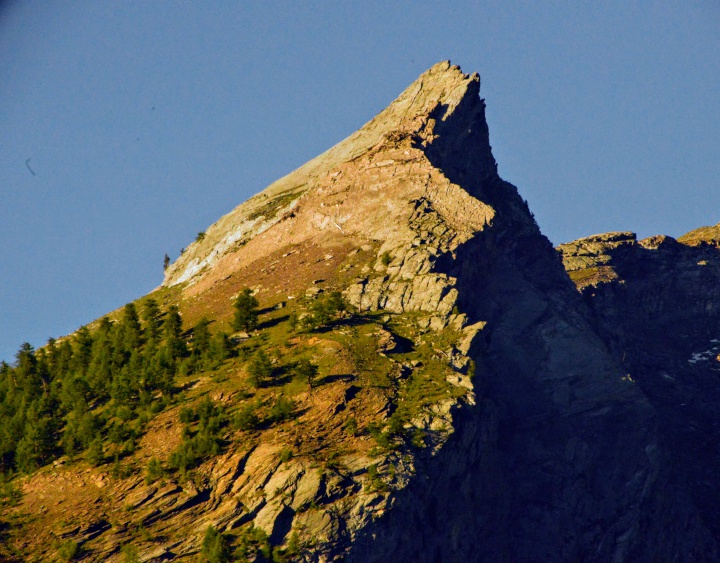
The summit of Punta Pousset
loomed large over day three of the inaugural Earthworm
Gathering - a magical
day.
Publication Postscript 16th November 2017>
Additional Context – The LifeHack Flourishing Fellowship of Winter 2015Advertisement - scroll to continue readingIn 2014 I joined Enspiral. Based in Wellington NZ, Enspiral is a group of entrepreneurs and freelancers who have joined forces to support more people to work on “stuff that matters”. It’s an inspirational, supportive, well-adjusted and creative network to be involved with.
One of the group’s projects at that time was a Govt. grant funded programme called Lifehack. Lifehack was tasked by the Govt. with developing innovation capacity among those working to improve youth well-being in NZ. The programme was part of a series of responses to NZ experiencing the highest rate of youth suicide in the developed world.
In 2015 Lifehack announced a programme called the "Flourishing Fellowship". Having observed the role of Lifehack’s team within the Enspiral collective, and knowing how gifted the team was, I applied to attend. To my great delight I was accepted. Fellowship training consisted of three educational huis, held over 12 weeks with online exercises and modules in between.
The inaugural Flourishing Fellowship intake at Riverslea retreat mid 2015Like Earthworm’s Inaugural Gathering, the fellowship brought together people who did not know each other to learn together and share life experiences. And also, like Earthworm, a key objective of the program is to increase the internal resilience of its participants. Youth Mental Health is inherently challenging and strengthening the support networks for those involved in the work is vital.
The Fellowship was remarkably effective in achieving both objectives. I hope to write in detail about the Fellowship sometime soon, but for now I will simply say that it was a successful experiment. It has since been followed up with 2016 and 2017 Fellowship programmes. Sadly as is often the way with these things funding was cut this year, but its lessons will, I hope, live on.
The Flourishing Fellowship is relevant to my story of day three of the Earthworm Gathering because I was hoping to see a replication of one of the key elements in the Fellowship at the Gathering. Namely, the creation over a very short period of time of a strong sense of trust, affection and shared purpose between strangers.
Playing games at the first Flourishing Fellowship huiAn aspect of the theory of change which lies behind the work of Earthworm and The Forest Trust is that meaningful and lasting systemic change often originates, and is maintained by, values based personal changes experienced by key staff within the organisations. Personal change often seems so very hard to achieve, or to maintain, especially for individuals who are isolated and who lack a strong support network.
If Scott Poynton and Julien Troussier’s Earthworm Gathering experiment was able to show that meaningful personal change – and connection - could be facilitated over a single four day encounter between strangers, then for me, the experiment would be a resounding success.
In short I knew what I was looking for at our Gathering in Cogne, something magical, and if it happened, I knew I would recognise it.
Sharing stories about transformational change
On day three we diggers woke to yet another sparkling day in the alps. Today we were to learn about transformation. How to apply the strength we had received from connecting with our ducks to our lives and work.
Julien and Scott invited us to "come duck first" to our morning's practice session.
We were to be guided by our guts and to share our wisdom with one other. This day was to be about sharing our personal stories of transformation with each other.
After a brief introduction we were invited to take 20 minutes alone to think about our own stories of change and transformation.

Our working space at
Agritourismo Plan de la Tour in Epinel,
Cogne
I retired to a quiet corner with a notebook to search for a story to tell, quickly realising many of the biggest changes I had made in my life had been prompted by the actions of others and by fate, rather than intention.
In my early 40s my wife Wendy invited me to attend the gym with her and see how I felt. Doing so became a massively transformative experience, providing me with much more than simply a stronger and more resilient frame.
And when Wendy decided to go on a de-tox diet which included stopping eating gluten it was easier for us both to change our diet together. Three weeks later I had lost four kilos in weight, and felt 15 years younger, it was as if a cloud had lifted from inside my mind. And at the gym I suddenly found I was once again able to increase my strength.
Similarly my decision to try to become a journalist, what I had considered my vocation – but had thought to be a pipe-dream - came about thanks to fate. Aged 19 I had a motorbike accident. On the spot I decided never to ride a motorbike ever again. I bought a car, and picked up a hitch-hiker, a young visitor from the UK, who told me a the story of a welding accident at his workplace. He had been seriously injured, and nearly killed – but nothing had changed at the factory.
I was reminded again that I only had one life, and decided to give my vocation a shot. I turned my hitch-hiker’s story into a freelance submission to a national current affairs magazine. That story started my career as a journalist.
The other story of transformative change that jumped into my mind – and the one I told - was Scoop’s Operation Chrysalis - my work in 2015 to transform Scoop.co.nz into a charitable news organisation. This story was one of trying to achieve something absurdly ambitious, and doing so by dint of team-work, determination and carefully planned incremental change. It turns out that over a period of two years you can travel a long way by taking a series of fairly small, discrete, steps.
The moment of magic
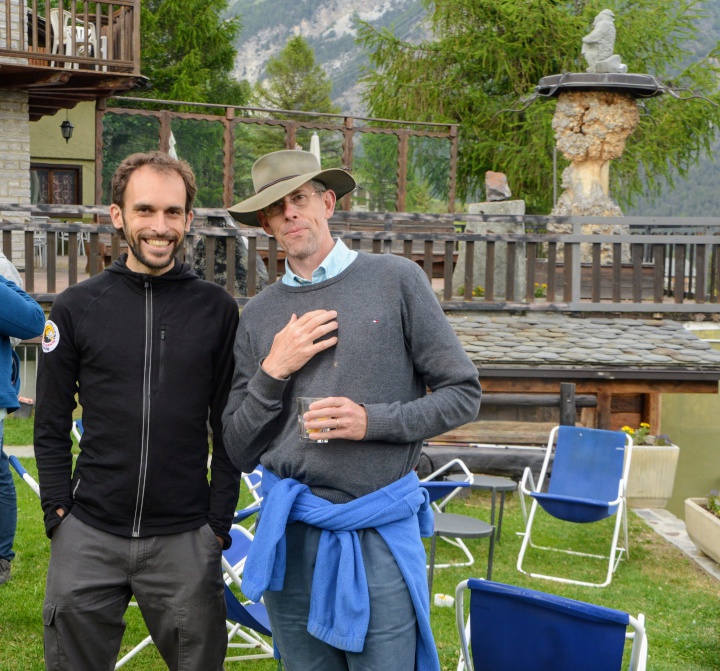
Our two Earthworm guides,
Julien Troussier and Scott Poynton
After our day in the mountains I think all of us were feeling refreshed and comfortable. And we had also begun to connect with each other.
At least 17 stories were told over an hour and a half. And you could have heard a pin drop. The diggers spoke spontaneously and the stories came from deep inside. They were not necessarily particularly personal or revealing, but all were stories the teller cared about deeply. And everybody was listened to. For me the final Digger’s story was particularly moving and personal, so much so that it brought tears to my eyes.
This was the magic that I had been looking for. The same flowering of collective connection and consciousness that I had experienced a year earlier in the Lifehack Flourishing Fellowship.
The stories related transformative experiences which had taught us important lessons, lessons which had lasted with us. Stories of courage, trust, hope, perseverance, generosity, and of kindness from strangers. We shared the lessons learned from our experiences and the change brought to our perspective, and our way of living.
My hunch is that the source of the magic lies not in the content of the stories, but in the presence, and the kindness in the room, which in turn is brought to the surface through the careful sharing of vulnerability.-We were ready to open up to each other because by then we cared about each other, and in revealing to strangers important aspects of our-selves, revealed our ducks.
As requested by Scott, we had indeed “come duck first” to the session.
On day one we had discovered what we cared deeply about – introduced ourselves to our ducks – and on day two we had each experienced a skirmish with the things that hold us back from being true to our inner ducks.
Through doing these - inherently revealing activities, in the company of each other, we had revealed our shared human vulnerability. And when we reassembled to tell our stories of transformation, the moment of magic that I had been waiting for unfolded.
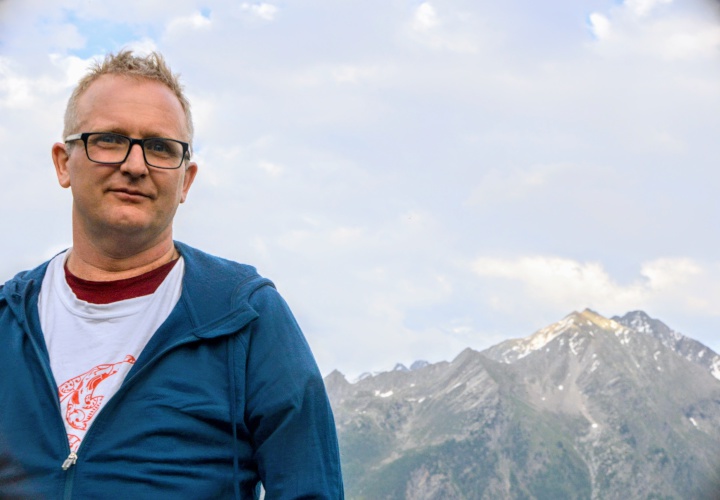
The author at the end of a
magic day.
Bringing It All Together Parzival
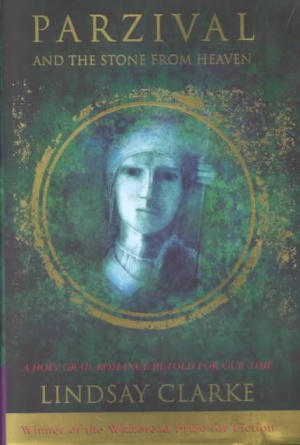
The cover of Lindsay Clarke’s
“Parzival and the stone from heaven”
The next part of the program was completely unexpected and very enjoyable. After the magic of the morning some actual stories of magic to follow were for me, the perfect complement.
Julien explained that a couple of years earlier The Forest Trust had decided to seek external assistance to assist with internal transformation. They engaged a group of drama therapists called Mythodrama to assist the organisation to understand its values.
As part of this process the team had introduced TFT to the story of Parzival, a 13th century account of the Arthurian Grail legend.
We gathered outside and Julien read a story from the Lindsay Clarke’s “Parzival and the stone from heaven”, which ends in this line.
"And if there was a war in heaven once, then we who are neither wholly good nor wholly bad, we who consist both of shadow and of light, we sad, wounded creatures standing between earth and heaven, striving to be whole – can, if we are truly human, choose to be among the healers too."
At that moment I felt it summed up the entire gathering - even though we still had a day to go.
Another hearty lunch of salad and cheese followed.
Becoming critical friends - Helping each other to be true to our ducks
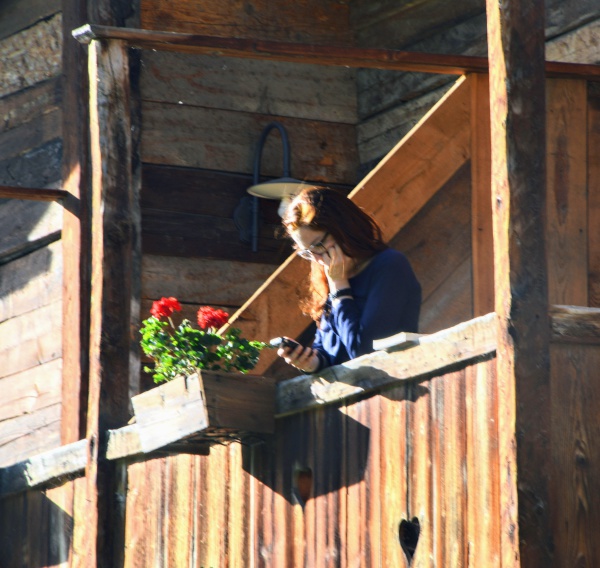
A digger during a
break
Introducing the final session in the Transformation section - which incorporated a technique used by the Center for Courage and Renewal - Scott pointed to the very important role of critical friends in helping us to make changes in our lives.
This was the beginning of our training in the final step in the Earthworm (& Forest Trust) VT-TV change process, Verification.
To bring constructive and lasting change we need to have methods of determining whether or not we are maintaining course on the right path. Simply relying on our own views on whether we are holding true to our values leaves space for cognitive bias to distort perception.
What followed was a practical exercise in assisting friends in their transformation.
We learned how to be better critical friends, by using a method which can be used to help someone address any challenge they are facing in life: either to better understand the issue that is confusing them; to help them frame a decision they need to make; or to resolve a dilemma (choice of course of action).
Whilst practicing the technique way we both helped each other, and were helped ourselves to solve an immediate issue in our own lives.
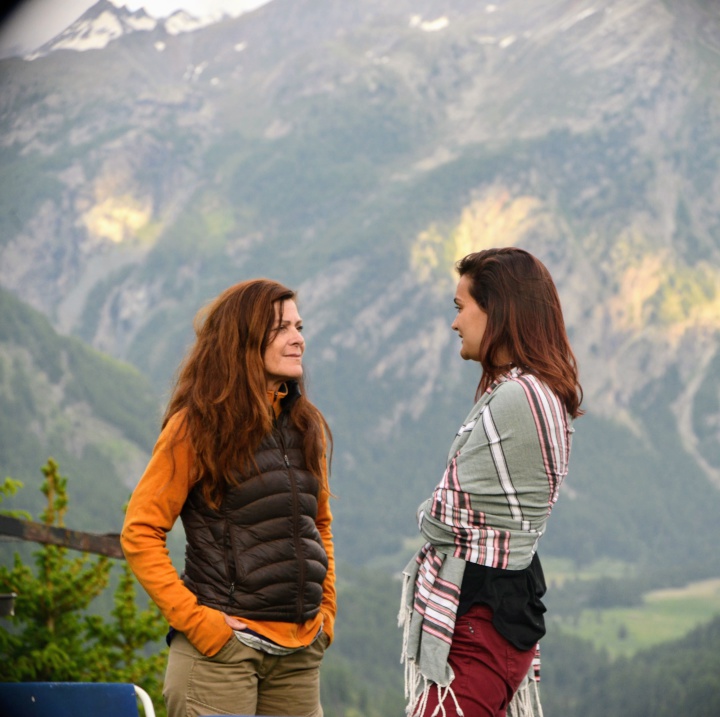
Diggers Denise and Milena have
a chat later in the evening.
Honest And Open Questions
At the heart of the exercise was a simple - albeit for many of us slightly counterintuitive - art of asking “honest and open questions”.
After explaining what we were about to do Julien offered himself up as a guinea-pig to enable us to practice the technique of asking open and honest questions. It quickly emerged that doing so doesn't come naturally.
The trick is to be a foil to the person answering questions, and to avoid leading them. No matter how much you may think you know the answer to the question being posed, your questions should not seek to guide in anyway, they should not be directing or judging in any way.
They should simply invite the subject to reflect on an aspect of the issue/question they have posed in a way that upon consideration helps them more fully understand their dilemma.
Julien told us the story of a dilemma he was genuinely puzzled by. We broke into small groups and formulated one open and honest question each to pose to Julien. While he didn't answer these questions he told us whether they qualified as open and honest, and whether they helped him or not - including whether they raised new approaches to his question which he hadn't thought about by himself.
Julien also gave us some advice on how to conduct ourselves:
- Because "the soul is a shy animal" we should not look into each others eyes while questioning;
- We should leave the silences - as these are precious;
- We are not looking for answers;
- When proposing the question to our small group we should choose an issue that we are happy to address now - one which we are in the right space of mind to discuss;
- The discussions were confidential and we should not follow up matters raised in them unless requested to do so by the person who asked the question.
Having learned the technique we then broke into small groups to help each other address an issue in our lives. By now it was early afternoon and I retired to a spot in the sun on the lawn behind our accommodation with two fellow diggers.
Diggers talking at the end of
the day outside Imer’s family’s restaurant.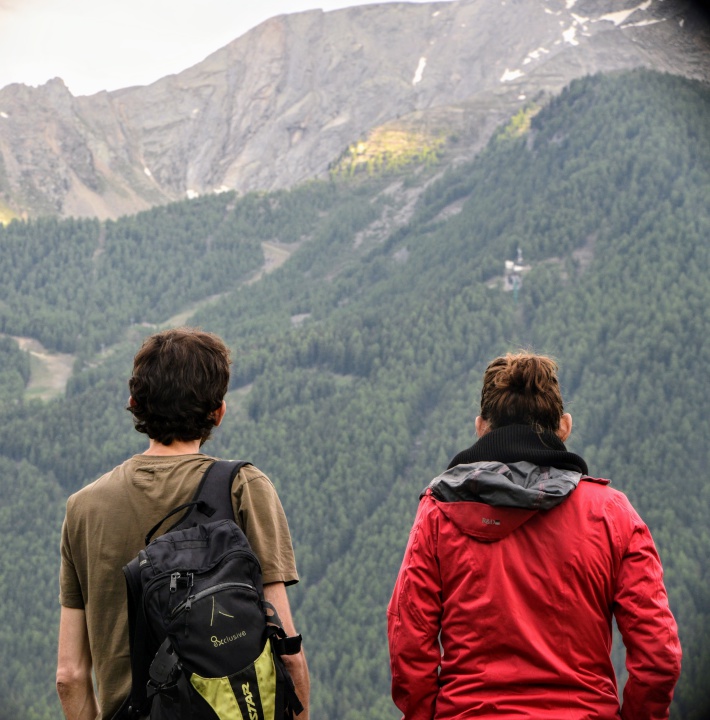
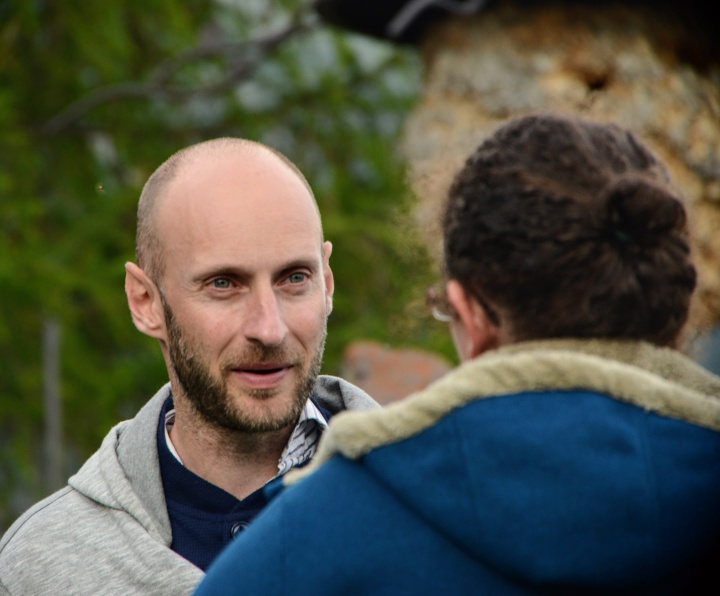
Each of us had five minutes to explain the issue we were seeking assistance with, followed by 25 minutes of answering questions, and finally five minutes break before the next person got to answer questions.
The hour and a half passed very comfortably on the grass outside our mountain chalet, and each of the trio in my group I think found it very helpful. And in the process the bonds between the diggers were deepened still further.
My question concerned the focus of my professional activities here in Europe and how I should approach the tensions that I felt between the various different projects that I am involved with. I.E. it was a question about focus. Even though the question was rather diffuse, the questions and opportunity to think and try to articulate answers to questions asked in a spirit of healing helped me a lot.
Meeting Imer
After all this talking it was time for another walk and another shared meal, and we set off up a mountain path to the neighbouring village of Gimillan perched on the side of the mountains high above Cogne.
We set off in high spirits up the track which wound its way around the mountain side with ever present views of Punta Pousset. The restaurant we were to dine at that evening was owned by the family of Imer, the 24 year old young man who had been assigned to pick two of our party up from Milan the previous Sunday, but who was unable to do so owing to having been struck by lightning at the summit of "his mountain" Punta Pousset on Saturday.
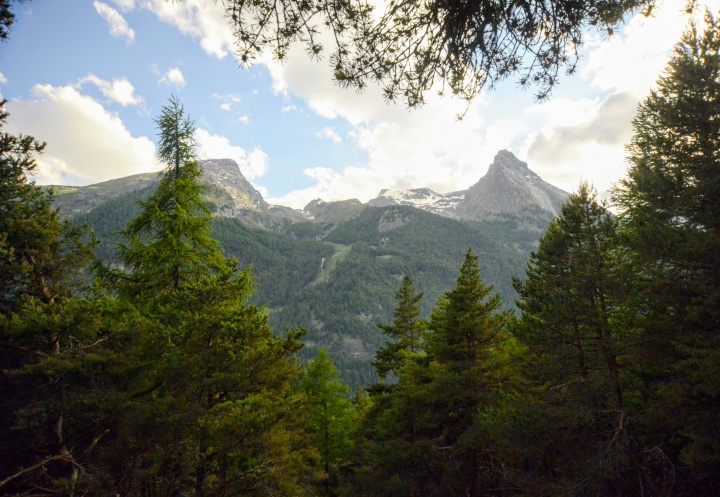
Punta Pousset as viewed from the mountain path to Gimillan.
Even though we were at 1700 meters altitude there wasn't a breath of air when we arrived and sat in the sun with gin and tonic's in hand looking directly up the Gran Paradiso valley which we had walked up and dined in the previous day.
There was a strong sense among the group that something special had happened to us all, and spirits were high. They became even higher when one of our number arrived a little later than the rest of us having struggled a little with the climb, but elated for having done so.
And another piece of magic was about to unfold, on a day of magical happenings.
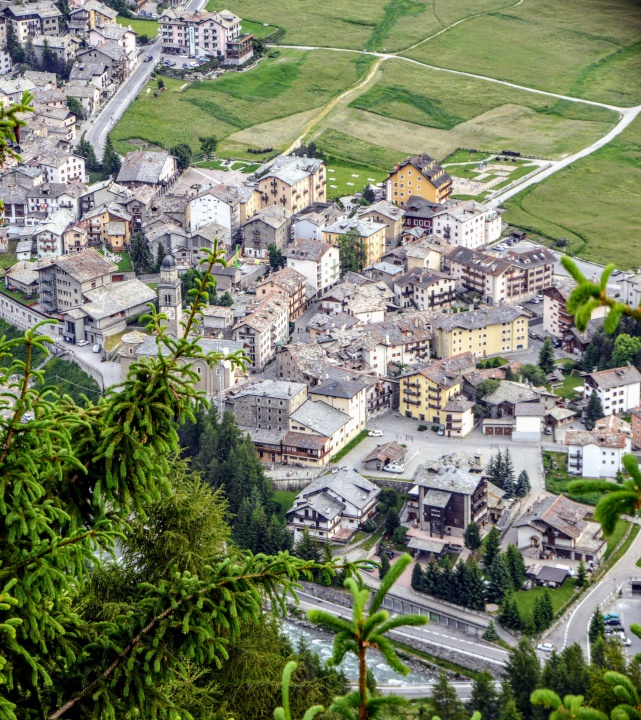
The village of Cogne, gateway to Gran Paradiso below us
Imer's "Incroyable" story
When we entered the restaurant to dine we found Imer standing beside the bar.
With several stiches on his face and lots of plasters he certainly looked injured, but here, just four days after being struck by lightning in the face on top of a 3000m mountain he was home, clear eyed and happy to talk to us about his ordeal.
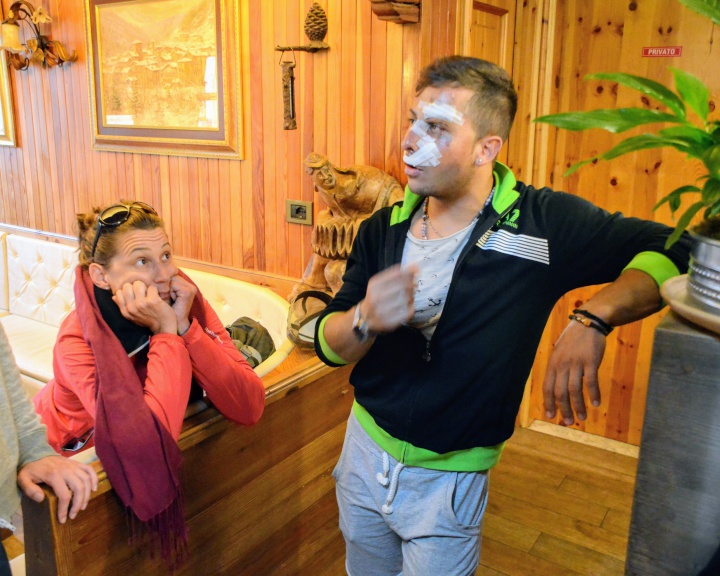
Imer telling us the story of
his encounter with lightning.
On his phone he had a picture of himself three minutes before the lightning strike. He was sitting on a rock beside the Iron cross which had taken the full brunt of the strike. He also had a picture of himself in the hospital before being patched up.
Speaking in French, which is the native language in this part of Italy, Imer described how he felt a rise of static in the air before being struck. The lightning had arced off one of the arms of the cross and struck his left eyebrow almost horizontally. From there it had bounced off the bone at the top of his nose, breaking it, and then exited his face from his left cheek.
The doctors told him they found particles of iron in his wound created when the temperature of the lightning bolt smelted iron in his blood, creating solid iron. The doctors also told him he was one of only seven people in the world who had been struck in the head in this way and yet escape relatively uninjured.
"C'est incroyable," he kept saying in a soft and steady voice.
Around his neck he had an ornate set of Rosary beads from Medjugorge given to him in hospital by David, the son of Letizia Savin, our host in Epinel who had been up the mountain with him on the day he was struck. From time to time he would hold it and roll the cross in his fingers. As I looked at him the most astonishing thing for me was the fact that after being struck by a lightning bolt travelling at a third of the speed of light - which raced around the edges of his eye socket - he didn't even have a black eye!
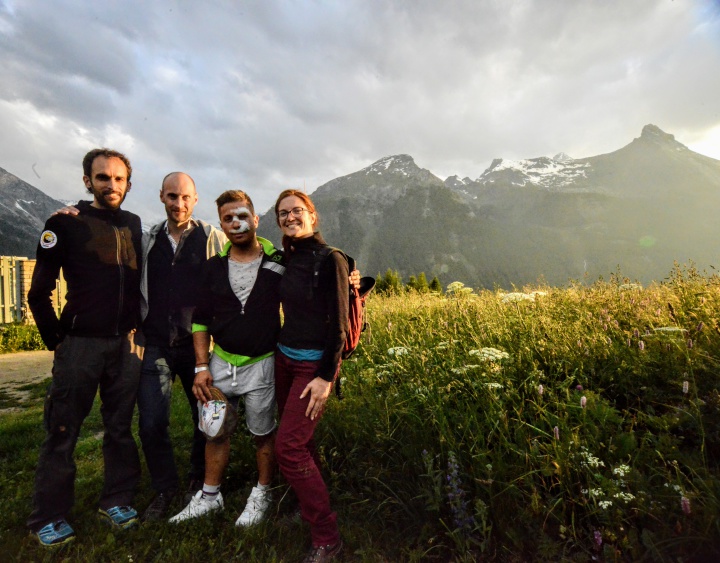
Imer and three diggers with
Punta Pousset in the background, far right, as the sun set.
Nor was he knocked out.
Following the lightning strike Imer realised he needed to get to hospital immediately. Bleeding badly from his face, he ran down a steep ridge path off the peak and then down another steep path into the valley below. He took just 50 minutes to descend 1600m. Imer said he thought his dog decided he was abandoning him as he ran away, instead of accompanying him down he ran back to escort his friend off the mountain.
Imer's response to his narrow escape from death is also "incroyable". He told us the mountain - that he loved, and which he had grown up in the shadow of since he was born, and which he had climbed countless times - had taught him a lesson. Imer said he was a vain person and that his looks meant a lot to him - being struck in the face was the mountain teaching him humility.
He didn't seem at all perturbed at this, and happily agreed to be photographed with the mountain that taught him a lesson behind him. He told us that since he had arrived home his dog no longer recognised him, which he was putting down to the fact that his smell had changed.
And then it was time for dinner.
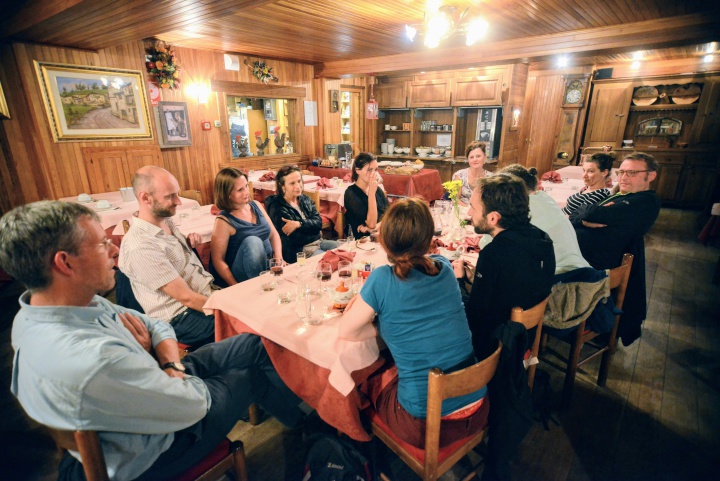
Our final Earthworm gathering dinner, brim full of bonhomie.
Story telling in the dark
After a wonderful meal we set off back down the mountain in the dark walking together for safety.
As we walked John (Admiral) Nelson told us a fascinating story about walking in the dark through forests in Africa with Pygmy forest guides. And upon arrival back in at our mountain sanctuary several of us stayed up continuing with our story telling adventure.
(to be continued….)
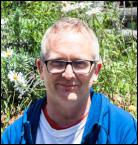 Author’s note:
Alastair Thompson is a political journalist and entrepreneur
from New Zealand who moved to Europe at the end of 2015. He
is presently freelancing in Europe and working on a number
of projects as an adviser including Earthworm. From 1999 to
2015 he was the editor and general manager of Scoop
Independent news a digital news startup which publishes the
Scoop.co.nz news website.
Alastair welcomes feedback and questions at alastair@scoopmedia.co.nz
Author’s note:
Alastair Thompson is a political journalist and entrepreneur
from New Zealand who moved to Europe at the end of 2015. He
is presently freelancing in Europe and working on a number
of projects as an adviser including Earthworm. From 1999 to
2015 he was the editor and general manager of Scoop
Independent news a digital news startup which publishes the
Scoop.co.nz news website.
Alastair welcomes feedback and questions at alastair@scoopmedia.co.nz
ENDS


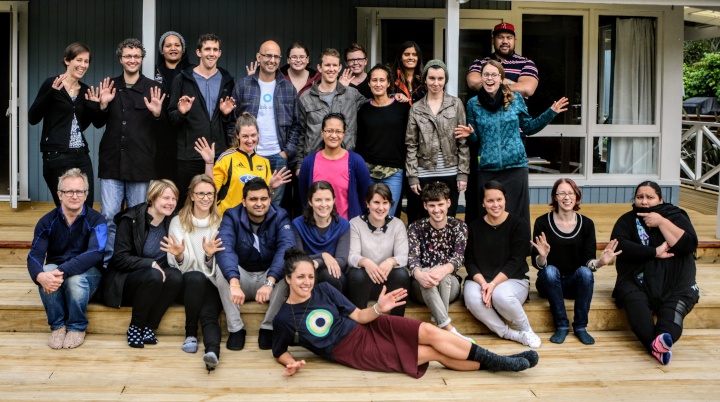
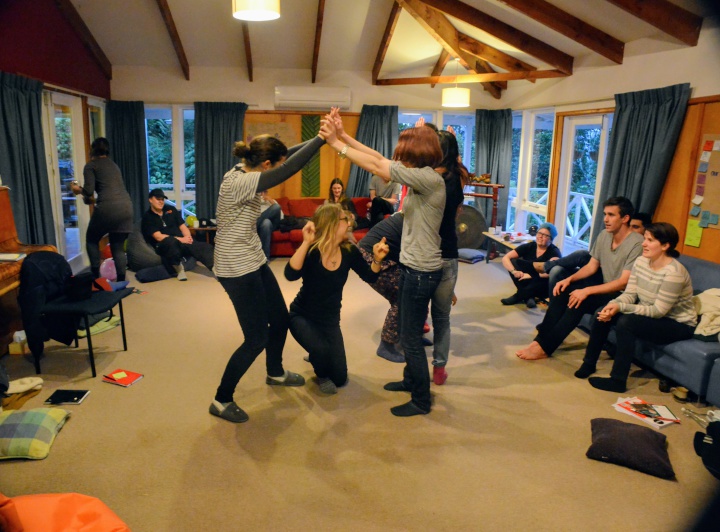
 Keith Rankin: Make Deficits Great Again - Maintaining A Pragmatic Balance
Keith Rankin: Make Deficits Great Again - Maintaining A Pragmatic Balance Richard S. Ehrlich: China's Great Wall & Egypt's Pyramids
Richard S. Ehrlich: China's Great Wall & Egypt's Pyramids Gordon Campbell: On Surviving Trump’s Trip To La La Land
Gordon Campbell: On Surviving Trump’s Trip To La La Land Ramzy Baroud: Famine In Gaza - Will We Continue To Watch As Gaza Starves To Death?
Ramzy Baroud: Famine In Gaza - Will We Continue To Watch As Gaza Starves To Death? Peter Dunne: Dunne's Weekly - A Government Backbencher's Lot Not Always A Happy One
Peter Dunne: Dunne's Weekly - A Government Backbencher's Lot Not Always A Happy One Richard S. Ehrlich: Cyber-Spying 'From Lhasa To London' & Tibet Flexing
Richard S. Ehrlich: Cyber-Spying 'From Lhasa To London' & Tibet Flexing